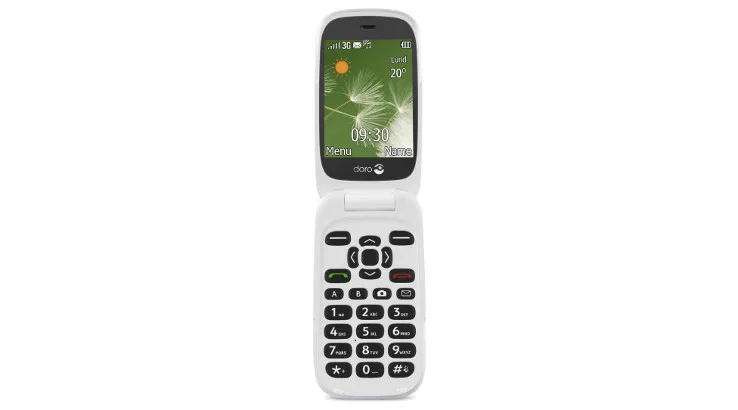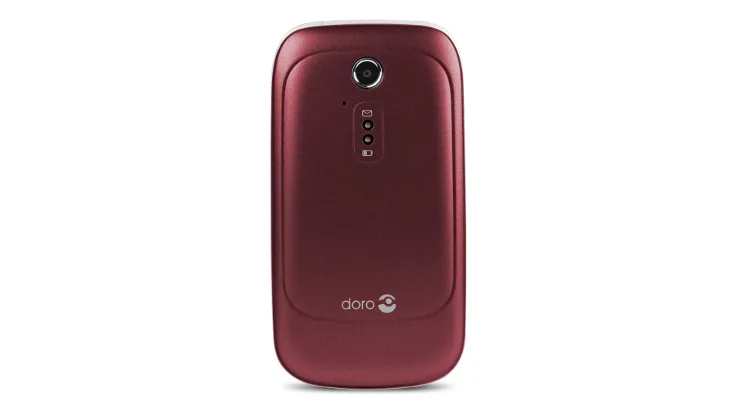Doro has revived the clamshell design of early 2000s mobile phones for the 6520, producing a handset that looks like it could have tumbled right out of a turn-of-the-century time capsule. But while it might not be quite as sleek as your average top-of-the-line smartphone, the 6520's compact size makes it easy to both hold and slip inside your pocket or bag while you're out and about. A soft-touch coating on the phone's back side provides extra grip, too, which should help prevent any nasty drops.
Core to the simple appeal of the Doro 6520 is its inclusion of a physical keypad rather than a touch interface. Large buttons on the bottom half of the phone provide quick access to call and camera functions, as well as handling menu navigation on the 2.8-inch non-touch screen located on the phone's top half. Screen resolution is a modest 320 x 240, but Doro's custom operating system includes a range of options for increasing text size and adjusting other display settings for folks with impaired vision.
Audio is another area where the Doro 6520 emphasises accessibility. The handset boasts full hearing aid compatibility (HAC) with a rating of T4/M4 and can amplify incoming voice calls by up to 35dB. Ringtone volume is also quite powerful, with a maximum output in excess of 83dB at distances of one metre.
The Doro 6520 comes with plenty of standard audio features, too, including MP3 playback, a built-in FM radio and a 3.5mm audio jack for connecting a pair of headphones. Alternatively, support for Bluetooth 2.1 means you can sync up a set of wireless headphones if you'd prefer. If you do plan on using the Doro 6520 as an entertainment device, you'll probably want to upgrade its built-in 128MB storage capacity with a microSD card. Just note that the 6520 only supports cards up to 32GB in size.
It's worth mentioning a couple of other valuable accessibility features the Doro 6520 brings to the table. First, there's the emergency assistance button located on the rear side of the phone's bottom half. When held down or pressed twice in succession, it sends out an SMS message to the people you've designated as emergency contacts. It then attempts to call them one by one, repeating this multiple times to maximise the chances of reaching help.
Another valuable assistance option is the In Case of Emergency (ICE) feature. This allows you to record important medical information into the 6520's memory such as any conditions you suffer from, any allergies you have and your blood type. In the event of an emergency, medical personnel can access this information quickly and easily even if you're not in a state to provide it.
One other factor to keep in mind with the Doro 6520 is its limited network capabilities. It can only connect to 3G networks rather than the faster 4G networks, though this has little practical impact on the quality of calls or texts. If you plan on using the 6520 for Internet use via its built-in web browser, you may notice significantly slower speeds over 3G, but to be fair, the 6520 isn't designed for heavy web browsing. That's all the more apparent given the 6520's lack of Wi-Fi network support.



